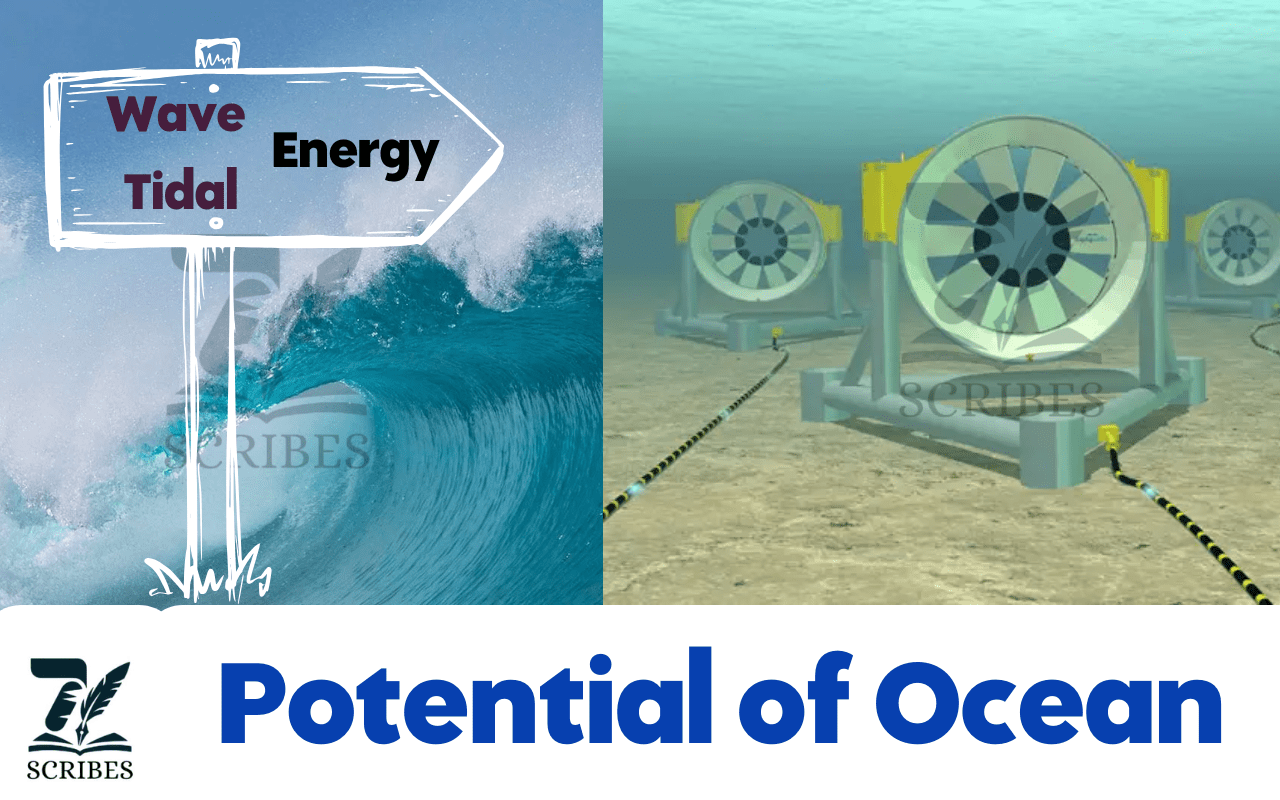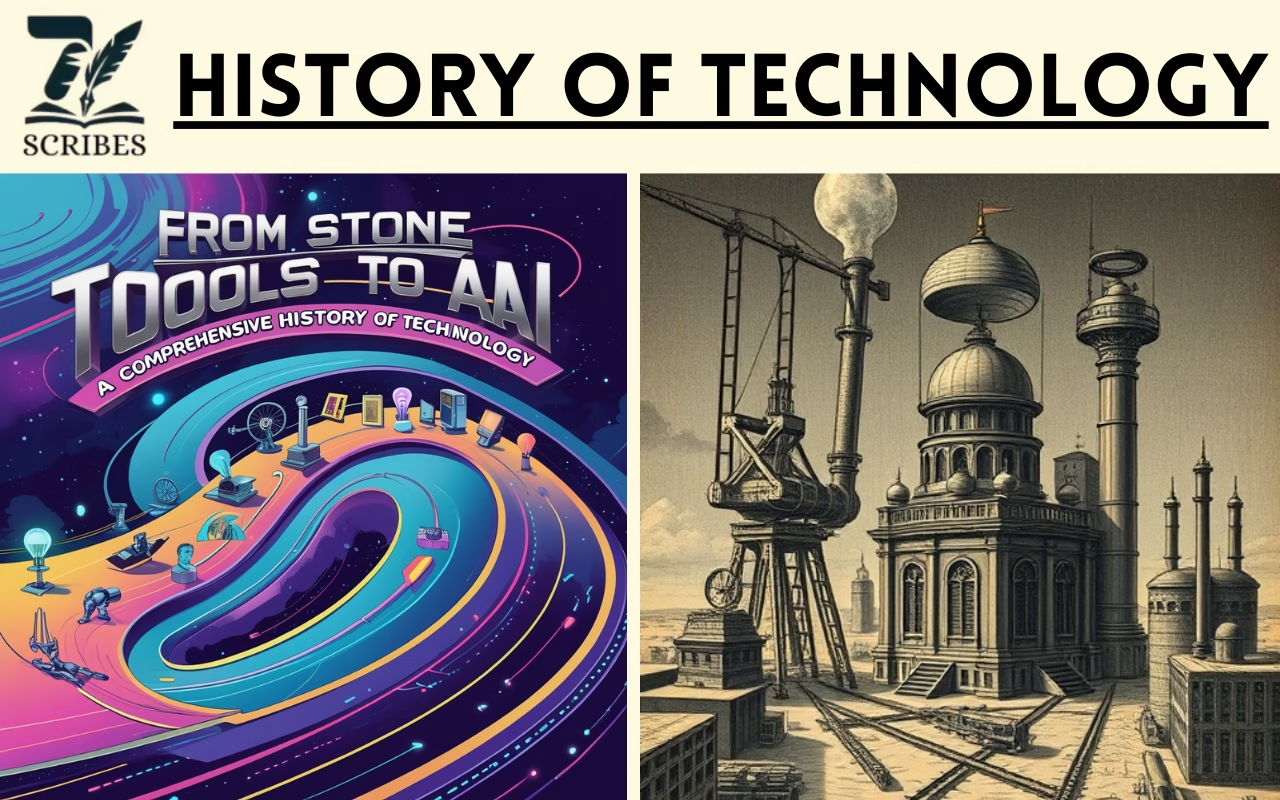In this article, we discussed the two renewable energy resources tidal and wave energy. Various governments have implemented their potential, applications, importance, and practical projects. This article also specifies how we make electricity from wave energy. Major companies that work on these projects and their achievements. Later in this article, we discussed different countries’ projects based on wave and tidal energy.
Introduction:
This section gives you a quick introduction to renewable energy needs and importance. Let’s take a deep dive into the introduction, potential and importance of energy.
The Growing Need for Renewable Energy
As we know electrical energy is now one of the most important parts of human life. Living a life without electricity is unimaginable.
With the increase in the population of the world, the energy consumption is also rapidly increasing day by day. The basic source of energy is fossil fuels. In today’s world, almost 80 percent of the world’s energy consumption is produced using fossil fuels.
Is it infinite? Is it not finished after a certain time? The only answer is that the energy produced from the fossil fuels is a nonrenewable source of energy and it will be diminished after 100 to 200 years.
The only question that rises is, What happened after that? That’s why humans start to look for reliable sources of energy that will last longer and be renewable.
The cost of energy production from a nonrenewable source of energy is costly and also hurts the earth. The other reason is climate change. The carbon dioxide emission from the burning of fossil fuels leads to serious challenges to life on earth as a result of global warming.
Due to this, the glaciers are melting at a rapid speed. The country of Pakistan has about 3044 lakes created due to the melting of glaciers, and about 34 of them are endangered. This causes a decrease in clean water.
Due to the challenges caused by the use of fossil fuels, it creates a serious problem to human survival on earth. Humans would like to shift to a sustainable source of energy for long survival on the planet Earth.
The Ocean as a Vast Energy Resource
Like other sources of renewable energy (solar ), the ocean has high potential to produce energy that will be sufficient for the whole world. The ocean is the treasure of energy that is still undiscovered, according to the International Energy Agency, there could be 20,000 to 80,000 terawatt hours of energy that can be produced from the ocean annually. The current electricity consumption of the world is 27000 tera watt hours by 2023, which is far less than the energy that could be generated from the ocean. Klaus Lackner, professor of sustainable engineering and Arizona State University said,
“Anything on the ocean is difficult. It’s an unforgiving environment. Part of the problem is that the ocean is rougher because the energy is denser,”.
The coastline along the United States has the potential to generate 2640 Tera Watt hours of electrical energy each year, and it is more than the energy consumed by the whole population of the U.S. Other countries like France, the UK, Norway, and Ireland have coastlines that are more potential.
Purpose of the Blog
This blog highlights why wave and tidal energy are promising? The wave energy from the blowing of air or wave from the ocean, both have potential and are the main part of the renewable source of energy. This blog explores the current trends, technology, science, and future of wave and tidal energy.
Understanding Wave Energy
In this section, we discussed the basics of wave energy.
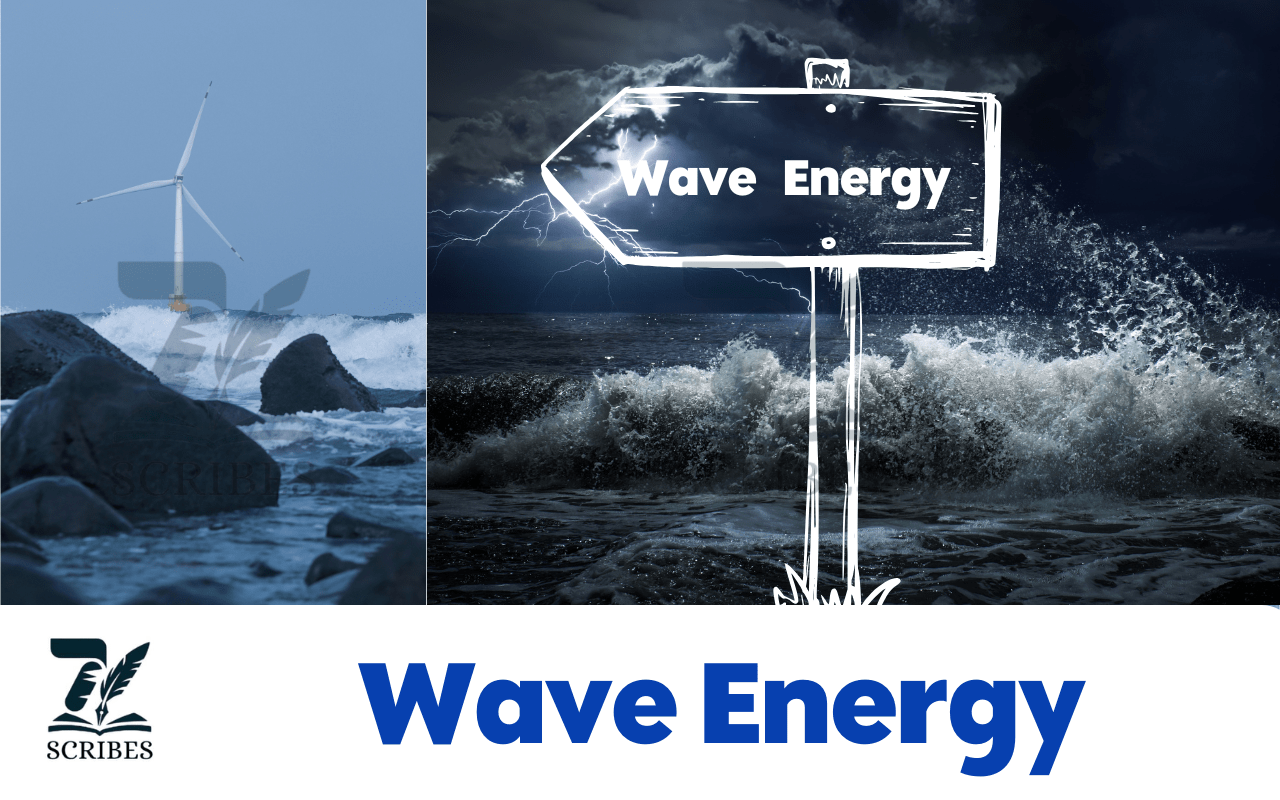
Wave Energy
2.1. What is Wave Energy?
The type of renewable energy sources obtained from the ocean surfaces and converts it into electricity.
Wave energy is generated when the wind interacts with the ocean surfaces that disturb the water and create waves. These wave carries kinetic and potential energy. This energy is then converted to electrical energy by using wave energy technologies.
The energy in the wave depends on the wave height (Amplitude), its frequency, and the wavelength of the wave.
The equation or formula for wave energy is given as:
| p |
= |
wave energy flux per unit of wavecrest length |
| Hm∘ |
= |
the significant wave height |
| Te |
= |
the wave energy period |
| ρ |
= |
water density |
| g |
= |
the acceleration by gravity |
The main question is how we obtain energy from waves. The answer is to use different wave energy converter techniques and technologies. Here are some popular and widely used wave converter technologies:
- Point absorbers
- Oscillating water columns
- Attenuators and terminators
- Oscillating water column
- Overtopping/Terminator device
- Rotating mass
- Bulge wave
- Submerged pressure differential
Here, we discuss only two technologies in detail.
-
Point Absorbers:
Point absorber is a wave-to-electricity converter oscillating device that derives energy from the relative motion of a fixed structure, a wave-activated, and a moving body.
Key Components of Point Absorbers:
- Buoy: It is the floating part of the device that oscillates with the wave. It may take various shapes, such as spherical, cylindrical, or other types of shapes that float on the surface of the ocean and always oscillate with the wave.
- Anchoring System: It keeps the device in the same place, allowing it to move with the interaction of the wave. A system may have a single point anchoring system or a multisystem.
- Power TakeOff (PTO) System: It is responsible for converting mechanical energy of the buoy into electrical energy. Commonly, used types are hydraulic systems, linear generators, and rotating turbines.
- Generator: The generator is designed and implemented into the system to convert mechanical energy into electrical energy.
- Control Systems: This part of the system is responsible for optimizing or adjusting the performance of the system to different types of waves. It is helpful to maximize the output (electricity generation) of the system.
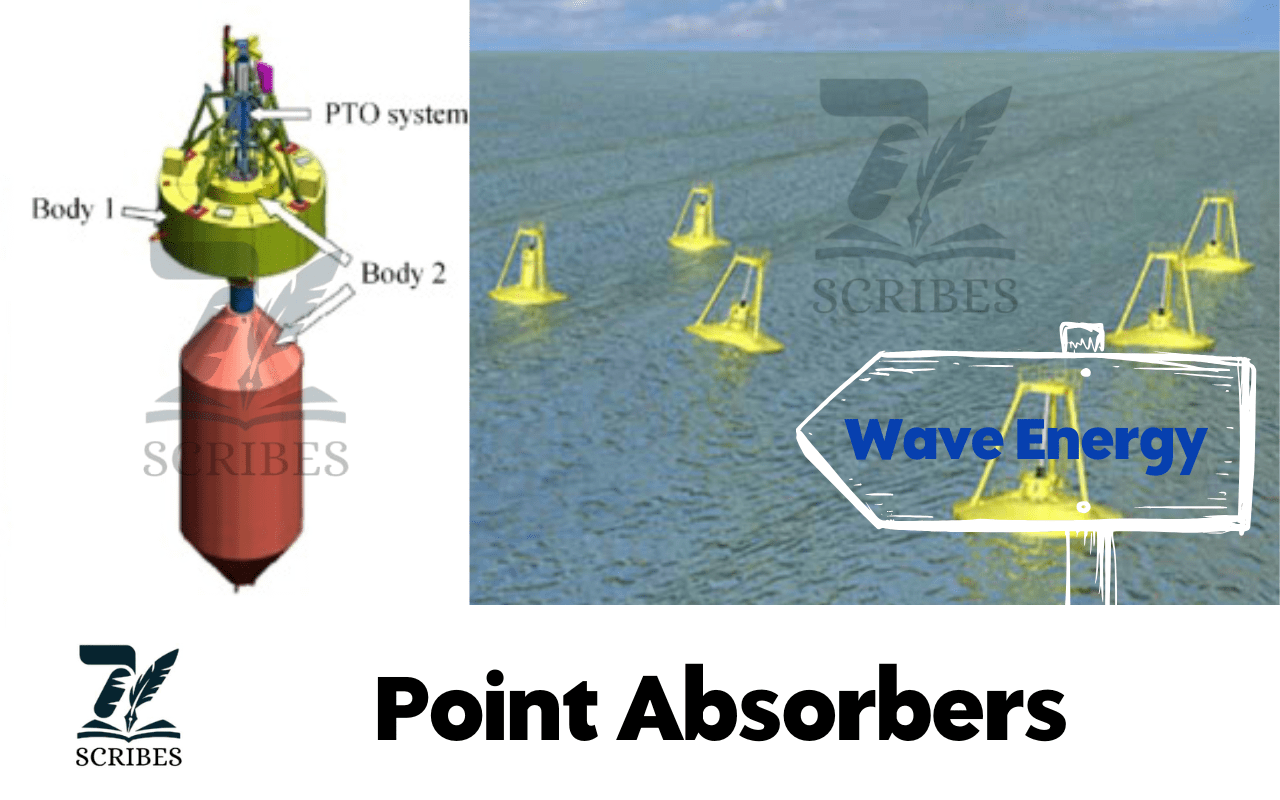
Working of Point Absorber:
How is Mechanical Energy converted into Electrical Energy?
Point absorber absorbs the kinetic and potential energy of the wave in the form of mechanical energy, then it is converted into electrical energy. Here is the stepbystep working of a point absorber.
- Energy Capture
The floating structure or buoy is placed in the ocean, which is moved vertically or in any other direction (horizontal) whenever the wave passes by it. As the waves go up and down, the buoy captures energy from the waves
- Mechanical Energy Conversion
The buoy’s relative motion with the wave derives mechanical energy, which is passed to the power takeoff system. It is then converted into usable energy. For instance, the hydraulic piston drives the motion to turn the turbines.
- Electricity Generation
The energy from the power takeoff systems is converted into electricity using a generator. Then, this electricity is passed to the grid stations by using underwater electrical cables for use.
Applications:
Application of point absorbers is OPT PowerBuoy (USA), WaveStar (Denmark), and CETO (Australia), etc.
-
Oscillating water columns (OWC)
Oscillating water columns are a waveelectricity converter that derives the energy from the falls and rises of water into the airflow. Which then derives the turbines to derive electricity. It is one of the most widely used technologies. It exploits the vertical motion of the wave, compresses, and decompresses air in the chamber.
Working of OWC:
Here is the complete working mechanism of oscillating water columns.
- Structure of OWC:
A submerged structure, which may be either made up of concrete or steel, with an opening below the water line. The chamber rises to incoming waves. At the top of the chamber there is a bidirectional air turbine and an electric generator is connected.
- Energy Conversion Process
The kinetic and potential energy of water is used to compress air. When the water level rises in the chamber, the air inside the chamber is rushed out through the duct, which results in spinning the turbines. When the water level of the chamber reached its maximum capacity, it then started to expel out when the air from the duct entered into the chamber, which results in spinning the turbines. One thing to keep in mind is that the turbines are rotating in one direction regardless of the direction of the air.
- Electricity Generation
The spinning of turbines drives the generator connected to the turbines, which generates electricity as a result. The generated electricity is then passed to the grid stations by using electrical cables underlying the ocean for use.
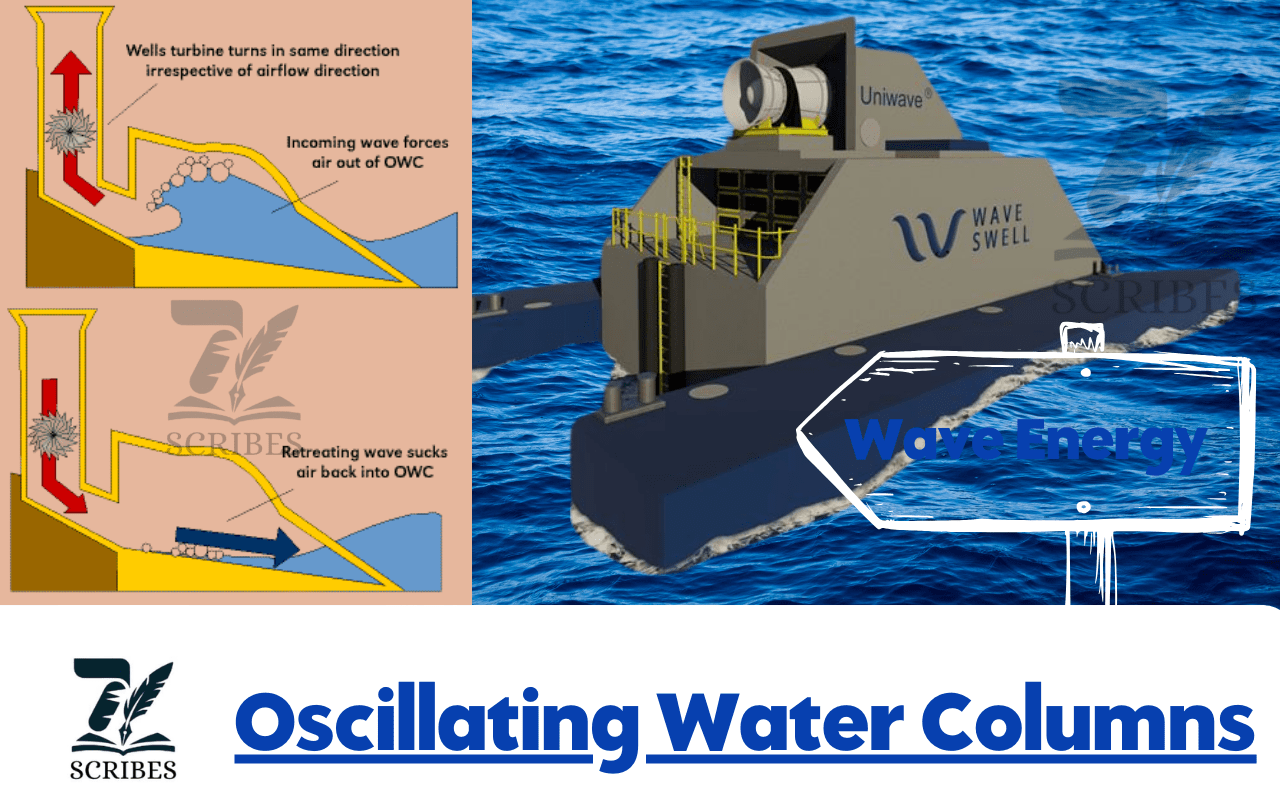
Key Components of an OWC
- Chamber:
- The chamber captures the water motion to drive the air flow. Which is rushed out through the duct.
- BiDirectional Turbine (e.g., Wells Turbine):
- The turbines rotate in one direction when the air is moving in either direction (reverse flow of air).
- Generator:
- The generator runs whenever the turbines spin and convert this mechanical energy into electrical energy.
- Air Duct:
- The channel through which the air flows to spin the turbines. It is important to rotate the turbine and the generation of electricity.
-
Understanding Tidal Energy
In this section, we discussed the basics of tidal energy and how different technologies are used to drive electricity from the tidal energy.
What is Tidal Energy?
Tidal Energy
The renewable sources of energy which occur in the form of tides. The tides are formed due to the fall and rise of ocean water due to the gravitational force of sun and moon while the rotating the earth. It converts the kinetic energy of moving water during the tides cycle to generate electricity. It is reliable, renewable with negligible carbon excreation.
According to reports, by 2030, 1% of the world’s electrical energy will be produced from tidal energy and rise to 10% by 2050.
Interesting Fact:
In America, the farmers used tides to run agriculture for thousands of years ago. The height of tides is maximum in specific time up to 40 feet.
Now, let’s discuss the common tidal to electricity converter technologies.
- Tidal turbines
- Tidal barrages
- Dynamic tidal power
Tidal Turbines
Tidal turbines are look like wind turbines but underlying or submerged into water. The blades of turbines are rotate when the tides current pass by it. This rotation convert kinetic energy of tides into electricity.
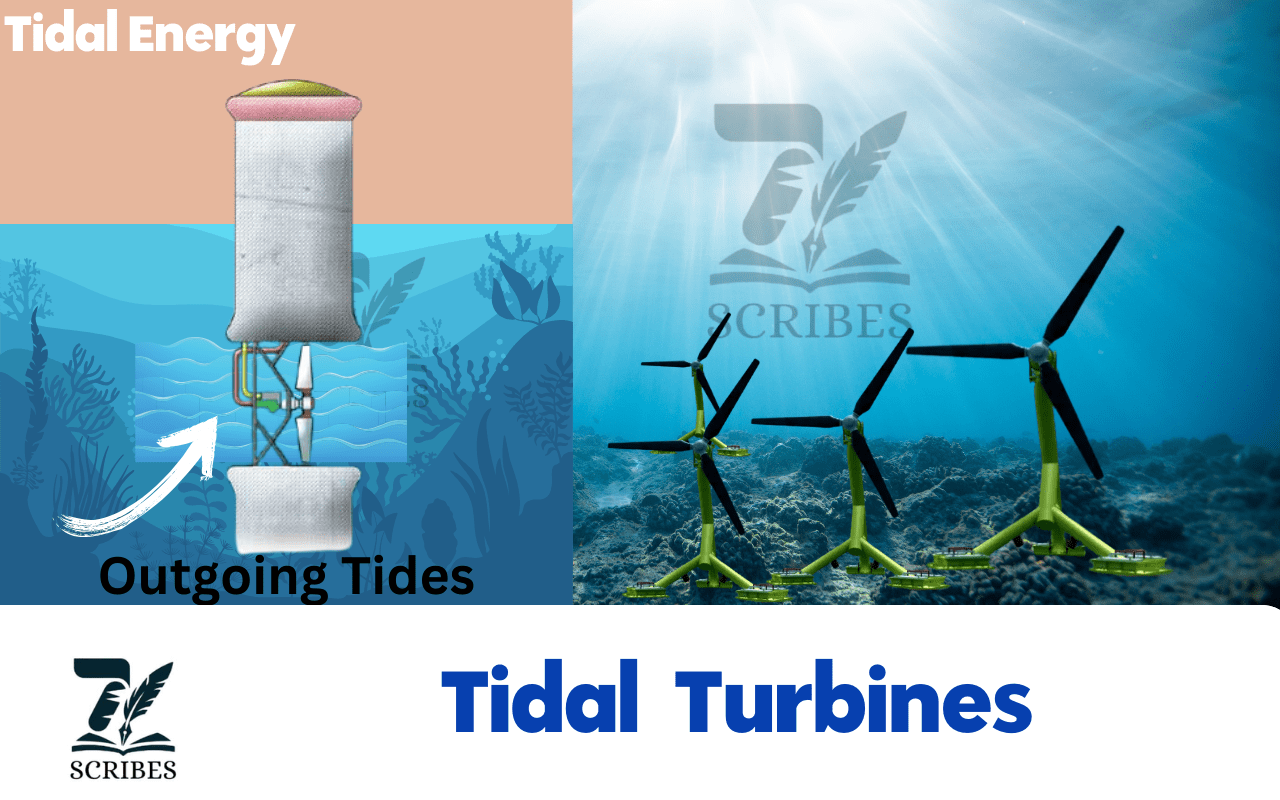
Working of Tidal Turbines:
The tidal turbines work in two steps:
- Energy Capture
The kinetic energy of ocean tides are captured when these tides are passed through the tidal turbines. These ocean tides rotate the blades of turbine result in conversion of kinetic energy to mechanical energy.
- Power Generation
The rotation of these turbines blades are either directly or through gearbox connected to the electricity generator. Then, this electricity is pass to grid station through underlying water cables.
Types of tidal turbines:
There are two types of tidal turbines, which are.
- Vertical Axis Turbines
- Horizontal Axis Turbines
Tidal Barrages
Tidal barrages are another technique to drive energy from the ocean. In this, dams and barrages are built on the river and store water. These stored water is then used to rotate the turbines that are connected to the electric generator. The turning of turbines results in the conversion of kinetic and potential energy of water to mechanical energy. This mechanical energy is then converted into electrical energy by using an electric generator. After that, the electricity passes to the grid stations through the electric cable.
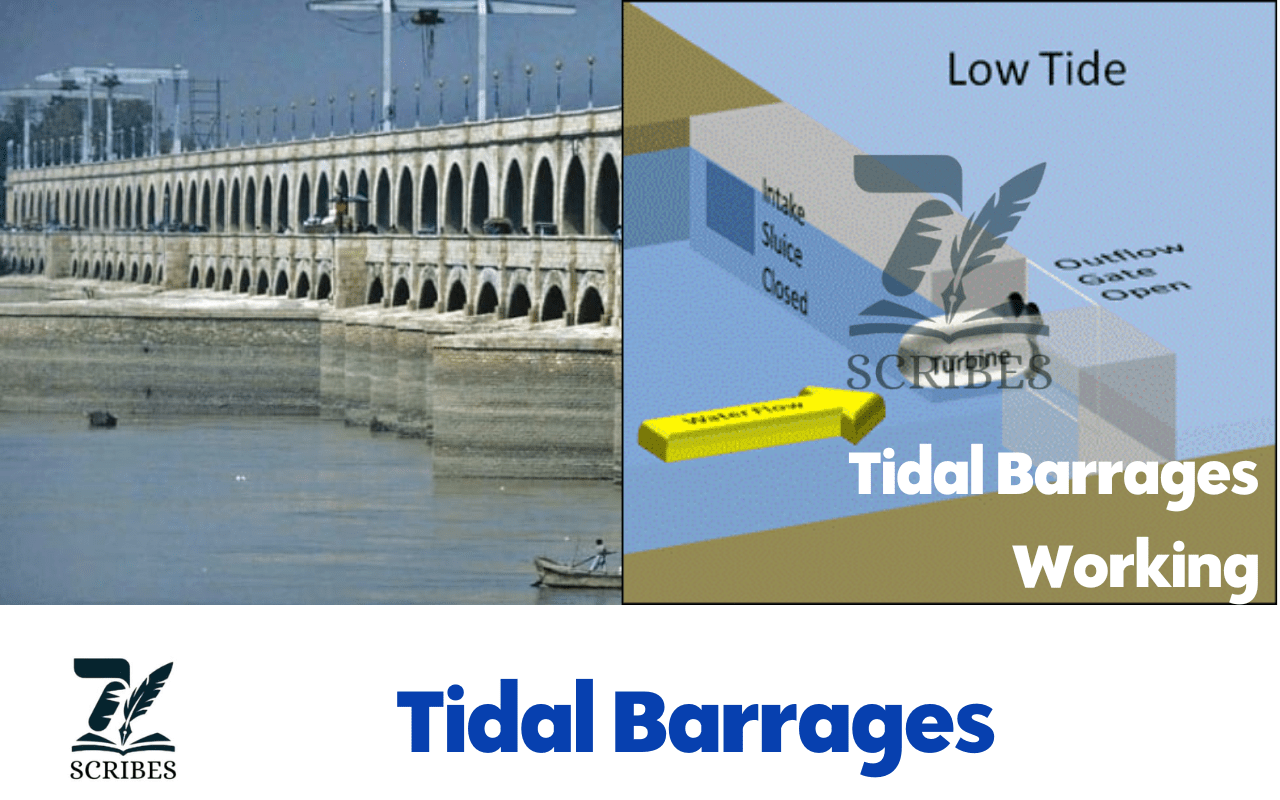
Advantages of Wave and Tidal Energy:
The advantages of wave and tidal energy are as follows:
Renewable Resource:
Wave and tidal energy are both renewable sources of energy that can be harnessed from the ocean waves.
Predictability:
With the season, area, and time the wave patterns can predict, which allow better production planning and result.
High Energy Density:
Wave carries a high amount of energy due to its higher density. The gravitational force of the sun and the moon also play an important role in the energy of the wave.
Carbon Emissions Reduction:
Wave and tidal energy are used to produce electricity with almost zero carbon emission, which helps to cope with climate change.
Scalability:
Wave and tidal energy can generate electricity at various scales from small barrage to ocean tides. Its show human can step up systems according to their need.
LongTerm Durability:
With zero emission of carbon the wave and tidal energy converter technology can be installed for long duration making it more suitable source of energy.
Different projects of countries of wave and tidal energy:
Here are the names of some countries that utilize wave and tidal energy for sustainable energy production.
MeyGen Tidal Stream Project (Scotland), European Marine Energy Centre (EMEC, Orkney), La Rance Tidal Power Plant (France ), Sihwa Lake Tidal Power Station (South Korea ), Fundy Ocean Research Center for Energy (FORCE, Nova Scotia Canada), Roosevelt Island Tidal Energy (RITE, New York U.S), Jiangxia Tidal Power Station (China ), Carnegie Clean Energy’s CETO (Australia), Aguçadoura Wave Farm (Portugal), Andritz Hydro Hammerfest (Norway ), and, Kairyu Tidal Current Power System (Japan).
Challenges and Barriers:
Almost everything in the world has advantages, but it comes with certain costs. Now, we are going to discuss the challenges related to tidal and wave energy from the ocean in terms of costs, maintenance, feasible location, etc.
-
Costs of Installation:
The first main challenge that would be the top line barrier for the ocean energy extraction work. The installation process of the devices required checking for feasibility, carrying out the devices to that location, and installing them is time-consuming and costly.
-
Maintananece
The different parts of the devices are placed inside the ocean, and some parts are floating on the surface. the salty water of the ocean erodes the metal surfaces of devices, causes the degradation of devices, as well as the energy extraction capability. To prevent these issues, it’s necessary to develop stainless steel and use it in the devices. Also, the recovery of these affected devices is also difficult. The workers need to dive in the ocean to maintain the devices.
-
Feasible Location
Another drawback of this is that every coastal line is not feasible for devices to extract energy. Some coastal lines have much wave and wind power to run the devices, while the rest of the majority is not feasible for it. Countries like America, China have been feasible for it (as mentioned earlier).
-
Environmental Hazards
The other challenges faced by ocean life. As different chemicals used in devices. In case of device failure, the chemicals are spread in the ocean, causing serious threats to ocean species.
-
Lack of Design
In today’s technology era, unfortunately, there is no proper prototype of devices that can be implemented to convert the ocean energy to electrical energy. Different countries are working on developing an efficient prototype model, which is efficient in terms of cost of production, installation, and maintenance, with minimum environmental impacts.
Future Perspective of Wave and Tidal Energy:
The current and the future outlook of wave and tidal energy is interesting and full of opportunities. Many startups (like Atlantis Energy, Tidalys) are working on it to make it possible, the aim of the world is to shift towards sustainable energy growth.
Here is some future prediction about the wave and tidal energy.
-
Economic Viability
The energy from non-renewable sources is costly and has serious environmental hazards like global warming. But the renewable sources of energy are eco-friendly. Which is not only helpful for the environment, but also economically feasible once the time of installation and certain maintenance. Also, the job opportunities are available for the workforce of the wave and tidal energy industry.
-
Global Market Potential
The global market has very high interest in the ocean energy projects, and the market caps were increased to 1.1 billion US Dollars in 2024 and about 21.8 billion US dollars by 2034, and now, almost along with different governments working on it.
FAQ’s
FAQs on Tidal and Wave Energy: Ocean Renewable Energy for a Sustainable Future
- How does tidal energy work?
Tidal energy works by harnessing the movement of ocean tides, which are influenced by the gravitational pull of the moon and the sun. Technologies like tidal turbines, tidal barrages, and dynamic tidal power convert the kinetic energy of moving water into electricity through submerged turbines or damlike structures.
- What are the advantages and disadvantages of wave energy?
Advantages:
- A renewable and predictable source of energy
- Reduces dependence on fossil fuels
- High energy density compared to wind and solar power
Disadvantages:
- High initial costs of installation and maintenance
- Potential environmental impact on marine life
- Limited suitable locations for wave energy converters
- Which countries are leading in tidal energy adoption?
The best countries using tidal energy include:
- United Kingdom – Home to the MeyGen Tidal Energy Project, the largest tidal stream farm
- France – Operates La Rance Tidal Power Station, one of the world’s first tidal power plants
- South Korea – Hosts Sihwa Lake Tidal Power Station, the largest tidal power facility
- Canada – Invests in tidal power generation in the Bay of Fundy
- Norway and China – Emerging players in blue energy solutions
- What are the main wave energy converter technologies?
The most widely used wave energy converters (WECs) include:
- Point absorbers (buoy-based systems)
- Oscillating water columns (OWC) (airdriven turbines)
- Overtopping devices (wave-driven water reservoirs)
- Attenuators (floating wave-following structures)
- What is the environmental impact of tidal power?
While tidal power generation is clean and renewable, it can affect marine life, alter sediment movement, and impact coastal ecosystems. New sustainable energy from the ocean technologies focus on minimizing ecological disruption.
- What is the future of ocean energy in 2024?
The future of ocean energy looks promising, with governments investing in offshore renewable energy projects, advancing marine energy technology, and developing cost-effective tidal and wave energy systems.
- Tidal barrage vs. tidal stream generators: What’s the difference?
Tidal barrages work like dams, storing and releasing tidal water through turbines.
Tidal stream generators use underwater turbines to convert kinetic energy from tidal currents into electricity.
- How can we harness energy from ocean waves?
Energy from ocean waves is harnessed using wave energy converters (WECs) that capture wave motion and transform it into electricity using mechanical systems.
- What is the cost of tidal energy production?
The cost of tidal energy is currently higher than wind and solar due to expensive underwater infrastructure and maintenance. However, as marine energy technology advances, costs are expected to decrease.
- What are the major wave energy projects in Europe?
Notable wave energy projects in Europe include:
- Pelamis Wave Power (Scotland) – One of the first wave farms
- Mutriku Wave Power Plant (Spain) – An oscillating water column project
- Wave Hub (UK) – A testing site for new wave energy technologies
- Is tidal energy renewable?
Yes, tidal energy is renewable because it relies on the natural movement of ocean tides, which are powered by the gravitational forces of the moon and the sun.
- What is the wave energy potential in coastal regions?
Regions with strong wave activity such as Europe, North America, Australia, and South America have high wave energy potential, making them ideal for ocean power systems.
- Which tidal energy companies are leading innovation?
Top tidal energy companies driving innovation include:
- Orbital Marine Power (UK) – Developers of floating tidal turbines
- SIMEC Atlantis Energy (UK) – Behind the MeyGen Project
- Nova Innovation (Scotland) – Pioneers in offshore renewable energy
- What are the biggest challenges of marine energy development?
The main challenges of marine energy development include:
- High infrastructure costs
- Harsh ocean environments affecting equipment durability
- Regulatory and environmental concerns
- Are there government incentives for ocean energy projects?
Yes, many countries provide government incentives for ocean energy projects, including:
Feed-in tariffs for tidal and wave energy.
R&D grants for marine energy technology.
Read More on this site:
2. History( World On the tip of hand)
3. Ai ( Era of Artificial Intelligence)

